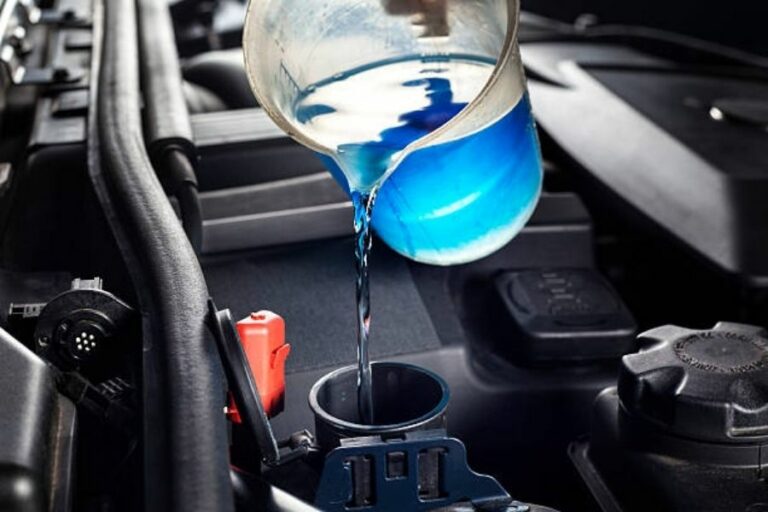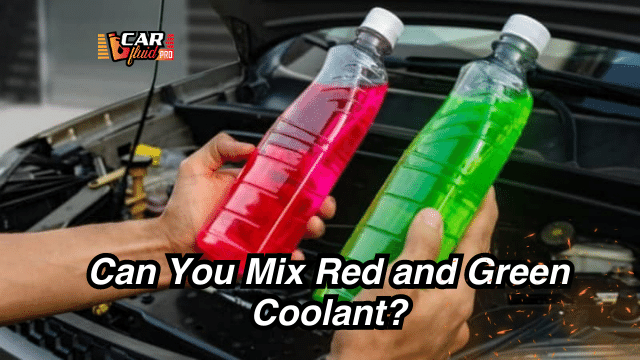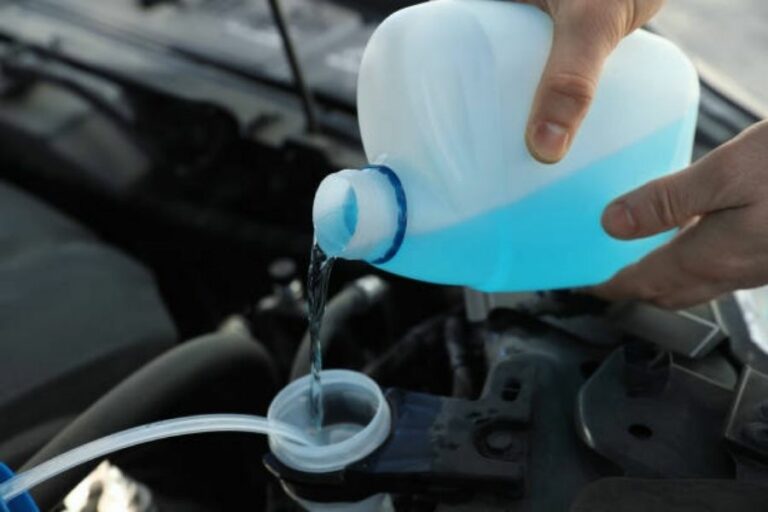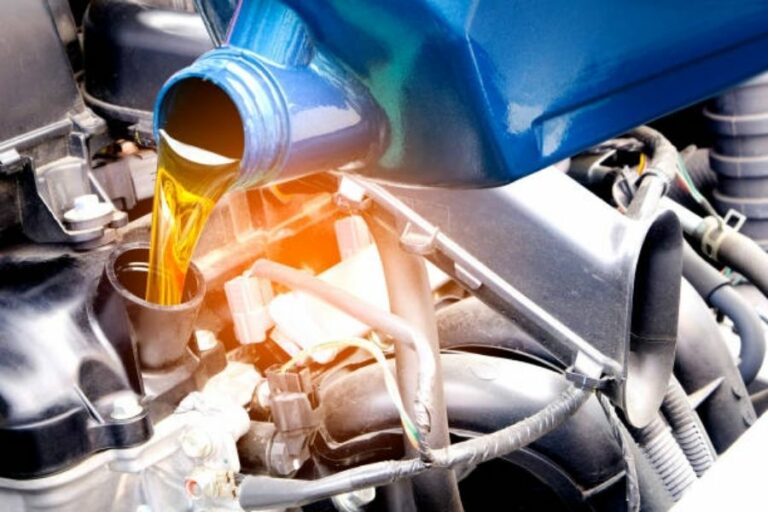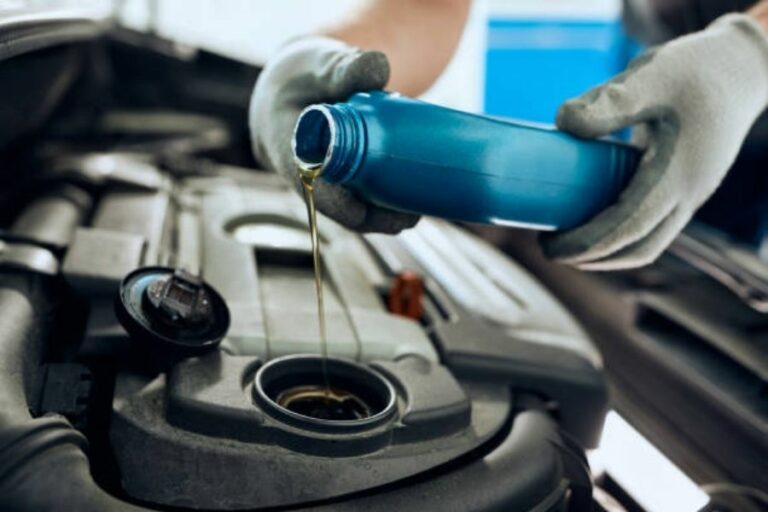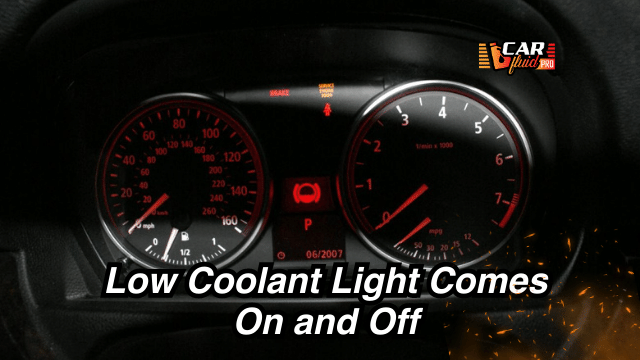Accidentally Put Water in Coolant Tank? Here’s What to Do
Many of us keep refilling the coolant tank like a ritual. We hardly think about why this solution must be mixed with water. And what can go wrong if we somehow forget to mix both things?
These might also be the questions running through your head if you accidentally put water in the coolant tank. So, let’s unpack the possible consequences and the right next step.
Can You Put Water in the Coolant Tank?
Mix the coolant you buy from the store with water (50:50) before filling the tank. It’s as simple as that.
Most coolants either have EGW (ethylene glycol) or PGW (propylene glycol) as the main ingredient. These chemicals create a barrier between the metallic parts of the radiator and the water.
Water, only on its own, is quite dangerous for the engine. Here’s why:
Boiling Due to High Temperature
Usually, water boils when the temperature crosses 212 degrees Fahrenheit. But here comes the problem.
A running engine’s internal temperature can sometimes get as high as 220 to 225 degrees Fahrenheit. That’s way beyond the boiling point for the water you put into the tank.
Hence, as the engine operates in full swing, the water will boil and start to evaporate. After a few minutes, there won’t be any water (in a liquid state) available to cool down the engine.
Get Frozen Due to Low Temperature
The total opposite of the first point we mentioned, engines sometimes have to operate in extremely chilling weather. According to the rules of thermodynamics, water will freeze when the temperature decreases up to -32 degrees Fahrenheit.
However, if you live in North Dakota or Alaska, the temperature becomes too rough for humans and engines during winter.
In those times, water can easily freeze as well. That means the engine still faces a lack of coolant in liquid form. Suppose the engine is slowly increasing its temperature due to combustion.
But the coolant, aka water, is frozen inside the pipe. Since the water isn’t flowing through the engine walls, you might end up with an overheating engine in such cold weather. Now, it all makes sense, right?
Causes Rusting
Rusting is the last thing you want on your engine walls. But water and metal are not the ideal combinations when you are trying to fight corrosion. Especially when the water starts to boil after a certain point, it consumes all the barriers protecting the metal parts against rusting.
Read Also: Accidentally Put Concentrated Coolant
Why Must You Stick With a Coolant?
As you can see, water is not the ideal thing to use instead of a coolant or antifreeze. There are some tasks only a coolant can achieve due to its chemical structure. Let’s take a look.
High Boiling Point
Unlike regular tap water, the anti-freeze solution has a higher boiling temperature (up to 223 degrees Fahrenheit). The extra stretch gives the engine more freedom to operate without boiling the coolant inside the pipes.
Low Freezing Point
Just like the boiling temperature, mixing both coolant and water decreases the freezing temperature even lower. It gets lowered to -35 degrees Fahrenheit.
And you already know what it means. Even though the outside is freezing, the coolant inside the tank will maintain a liquid form and keep doing its job as usual.
Protection Against Corrosion
For the corrosion part, water alone is harmful to the metal parts. But when you mix the antifreeze solution into it, the water doesn’t easily bond with the metal ions. It seems like there is an invisible wall between the two.
If you have ever had to deal with a rusting issue inside the radiator, you will know how horrific it is. First of all, that place is super awkward to reach. And removing the rust from the engine walls is another dreadful task.
Thankfully, none of it happens when appropriate coolant is used inside the tank.
Read Also: Can You Mix Red and Green Coolant?(Know Before Mixing)
What If I Accidentally Put Water in the Coolant Tank?
We would never suggest you put water instead of the anti-freeze solution inside the coolant tank. However, accidents happen. And we can’t turn blind to this.
People mostly rely on the water when the “check engine fluid” light comes up for all the cases we have reviewed. Moreover, the car starts to overheat tremendously. In that case, your coolant tank needs a refill ASAP.
But you might not have a stored extra coolant in the vehicle. What would you do if you were stuck in this situation in the middle of nowhere?
Yes, that’s the only circumstance when we tell you to pour water into the coolant tank until you reach the nearest repair shop.
If you have done that too, remember it’s not the end of the world. Yes, it isn’t good at all. But that was the right thing to do when you had no access to any coolant.
All the issues we associate with using water only come to action if you drive too long or fast.
If you live in a tropical area, frozen water shouldn’t be a concern for you. But to avoid the boiling water problem, make sure the engine temperature stays under 212 degrees Fahrenheit.
For that, drive slowly and find the nearest repair store. Don’t try to reach a far destination with only water inside the tank.
Read Also: Can You Mix Blue and Green Coolant? – Know Before You Use
What Should Be the Next Step After Filling the Coolant Tank With Water?
Okay, so you have used water accidentally. But now what? Is it going to stay that way? No. Once you reach the garage, the first thing you should do is flush the cooling system entirely.
Let the car rest because water might run across the pipes in extreme temperatures, which can burn you instantly. So, waiting a while and letting everything cool down would be wiser.
After that, open the coolant tank’s cap and flush out everything. Here, we might mention the one mistake people make. It’s to add coolant directly into the tank, which still holds water.
This might not look like a big deal. But the water inside the tank is not in its ideal form. The coolant will not work as effectively as you would have expected.
So, the right thing is to mix the coolant with a new batch of distilled water.
There you go. Hopefully, your vehicle will go back to normal without showing any disturbance.
Read Also: Which Way Does Coolant Flow Through An Engine? Coolant Pathway!
FAQs.
The rules slightly change when you are in a critical situation. That’s true for this coolant tank case as well. Here’s a F.A.Q. Section if you want to know the right ways to pour water into a coolant tank.
Can you use water instead of coolant on a regular basis?
Nope. You can only rely on the water during a crisis (as we described in the article). Regularly using water can cause warped engine walls, rusting and frequent overheating, and other serious issues.
Is distilled water better than tap water for a coolant tank?
Tap water contains lots of unfiltered minerals like copper. The problem with copper is that it sticks to the engine walls and creates hard-to-remove layers. That’s why it’s still better to use distilled water instead of tap water if you really have to.
Should I put cold water into the coolant tank?
In case of emergencies, try to avoid cold water as a replacement for the coolant mixture. It might cause the engine walls to ruin their shape or warp mostly because the engine walls become too hot from the operations while the water temp is too low. It’s better to use water at room temperature.
Conclusion
Water is not an alternative to an antifreeze solution for your car. We can’t say it enough. To avoid such accidents, carry a separate bottle filled with coolant with other spare accessories. It’s better to be safe than sorry, especially when it’s about your car.
Read Also: Can I Mix 50/50 Coolant With Concentrate

